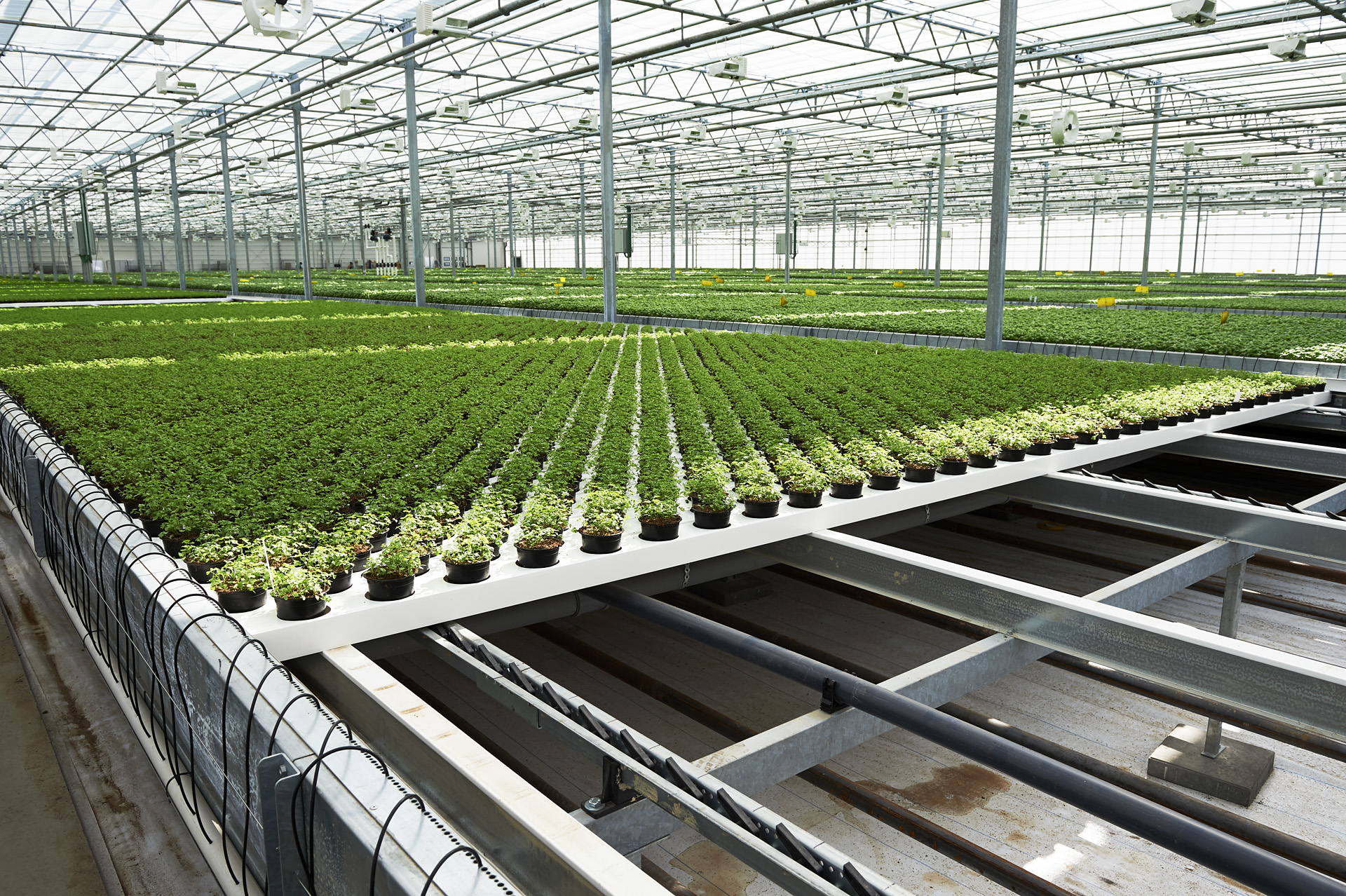Automation in CEA: Unlocking the Future of Farming
Automation is essential for growers to remain competitive as traditional farming struggles with climate unpredictability, labor shortages, and resource inefficiency.
By incorporating advanced technologies, automation in CEA offers a highly efficient and profitable solution, addressing the growing demand for increased food production while reducing environmental impact.
Increasing Efficiency
One of the primary benefits of automation is the significant increase in efficiency. Traditional farming requires extensive human labor, but automation in CEA reduces dependency on manual work. Smart irrigation systems, climate control, and AI-driven sensors ensure that plants receive optimal conditions 24/7 without human intervention.
Our Moving Gutter System is an excellent example of automation in CEA. This technology allows plants to be automatically spaced as they grow, ensuring optimal resource use and reducing waste. By automating these processes, farms can increase yields while decreasing costs. Automated lighting systems also play a crucial role, adjusting the light spectrum to optimize plant growth cycles, ensuring higher productivity.
Resource Optimization Through Automation in CEA
Water and nutrient management are critical factors in efficient agriculture. Automation in CEA enables precise water and nutrient distribution, reducing waste and ensuring plants receive exactly what they need. Fertigation systems, which combine irrigation with fertilization, deliver nutrients at the right time and in the right amounts, minimizing excess use.
Another key aspect of automation in CEA is climate regulation. Advanced climate control systems automatically adjust temperature, humidity, and CO₂ levels, creating the perfect environment for plant growth. This not only enhances yield but also conserves energy, making automation in CEA a crucial factor.

Labor Reduction and Cost Savings
One of the biggest hurdles in traditional farming is labor shortages. Automation in CEA reduces the need for a large workforce by handling repetitive tasks such as planting, monitoring, and harvesting. Robotic harvesters can pick ripe crops with precision, while conveyor systems transport produce efficiently, minimizing damage.
By implementing automation, farms can significantly cut operational costs. Instead of hiring a large team, growers can rely on AI-driven monitoring systems and robotics to manage daily tasks. This ensures consistency in production while reducing overall expenses, making farming more economically viable.
Improving Crop Quality
Consistency is key in agriculture, and automation in CEA ensures uniform crop growth and quality. Smart sensors monitor plant health in real time, detecting early signs of disease or nutrient deficiencies. Automated climate control maintains stable conditions, reducing the risk of crop loss due to environmental fluctuations.
With automation in CEA, growers can also optimize growing conditions based on data-driven insights. AI algorithms analyze past trends to improve future yields, ensuring maximum productivity. The ability to fine-tune every aspect of the growing environment leads to higher-quality crops with improved taste, texture, and shelf life.

Scaling Up with Automation in CEA
As demand for fresh produce increases, scalability becomes a key concern for growers. Automation allows farms to expand operations without significantly increasing labor costs. Vertical farming, for example, uses automated systems to stack crops, maximizing space efficiency.
Our Moving Gutter System further supports scalability by automating plant movement through different growth stages. This not only optimizes space but also ensures that plants receive uniform care from germination to harvest. Automation in CEA thus makes it easier for farms to scale up production while maintaining high efficiency and sustainability.
The Role of AI and Data
Artificial intelligence and data analytics are revolutionizing automation in CEA. Machine learning algorithms analyze environmental data to predict optimal growing conditions, enabling real-time adjustments. AI-powered drones and robots further streamline operations by inspecting crops and identifying areas that require attention.
Data-driven farming powered by automation in CEA also enhances decision-making. By collecting and analyzing data on plant health, nutrient absorption, and growth patterns, growers can make informed choices that lead to better yields and resource efficiency. This integration of AI into CEA marks a significant shift toward precision agriculture.

Sustainability Benefits of Automation in CEA
With climate change and resource depletion becoming pressing concerns, sustainability is a top priority for modern agriculture. Automation plays a vital role in reducing environmental impact. Automated systems minimize water usage, cut down on fertilizer waste, and optimize energy consumption through smart lighting and climate control.
Additionally, automation in CEA supports pesticide-free farming by using integrated pest management techniques. AI-powered monitoring detects pests early, allowing for targeted intervention without excessive chemical use. This makes automation in CEA a key component in the shift toward efficient agriculture.
Moving Gutter Systems as a good practice of CEA
A prime example of how automation can enhance CEA is our Moving Gutter Systems. When integrated with AI, our system becomes even more effective and efficient. AI enables real-time monitoring of plant growth and development, allowing for dynamic adjustments to gutter speeds and environmental conditions to precisely meet the needs of plants at each growth stage.
Our systems are particularly advantageous for crops such as lettuce, herbs, and leafy greens, where consistent and uniform growth is essential. By incorporating Moving Gutter Systems into CEA operations, growers can achieve higher yields, better crop quality, and improved sustainability, making them a key practice in the future of sustainable agriculture.





